A small rarity in the wild are especially the larger groups of wild ‘small grape hyacinths’ (Muscari botryoides).
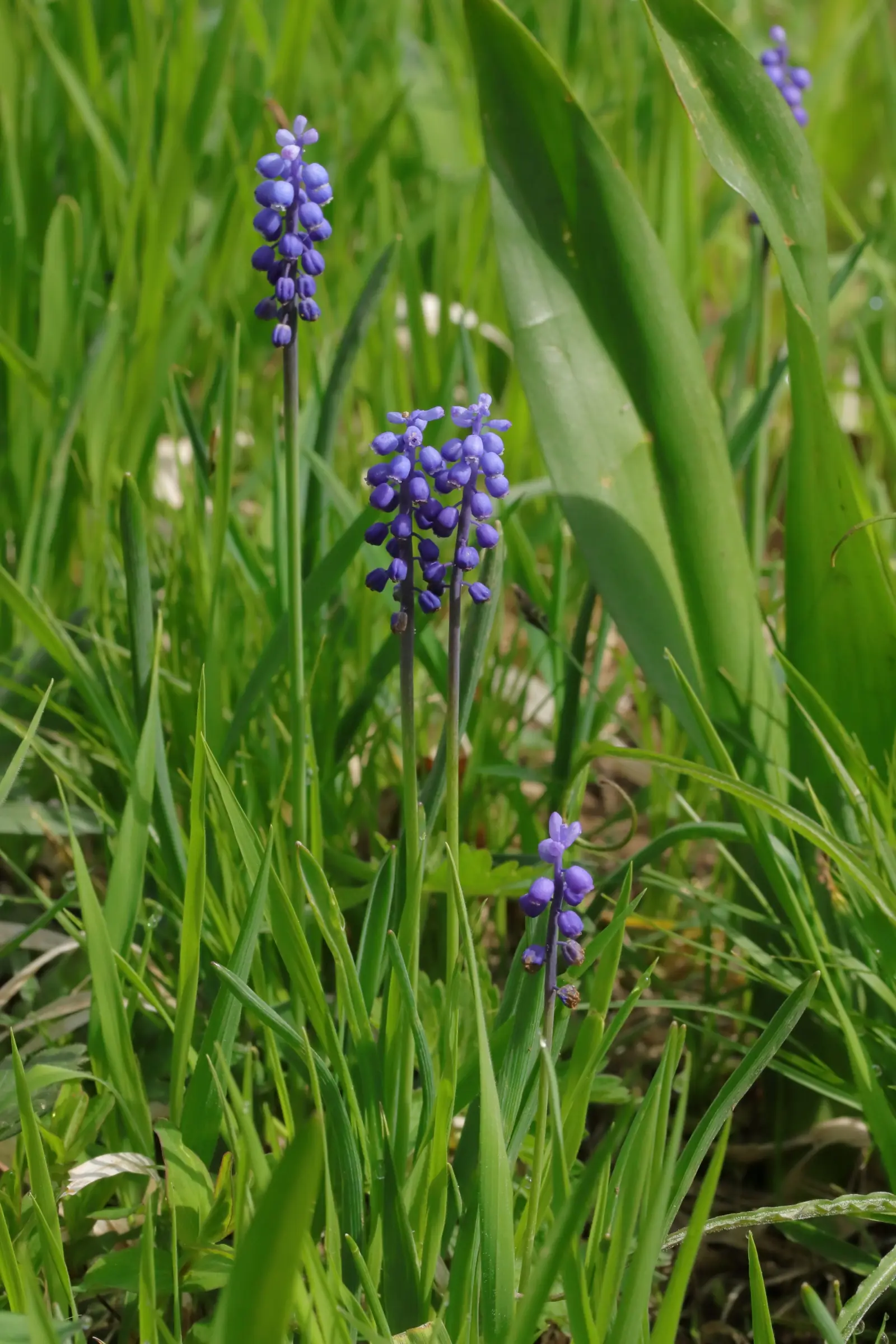
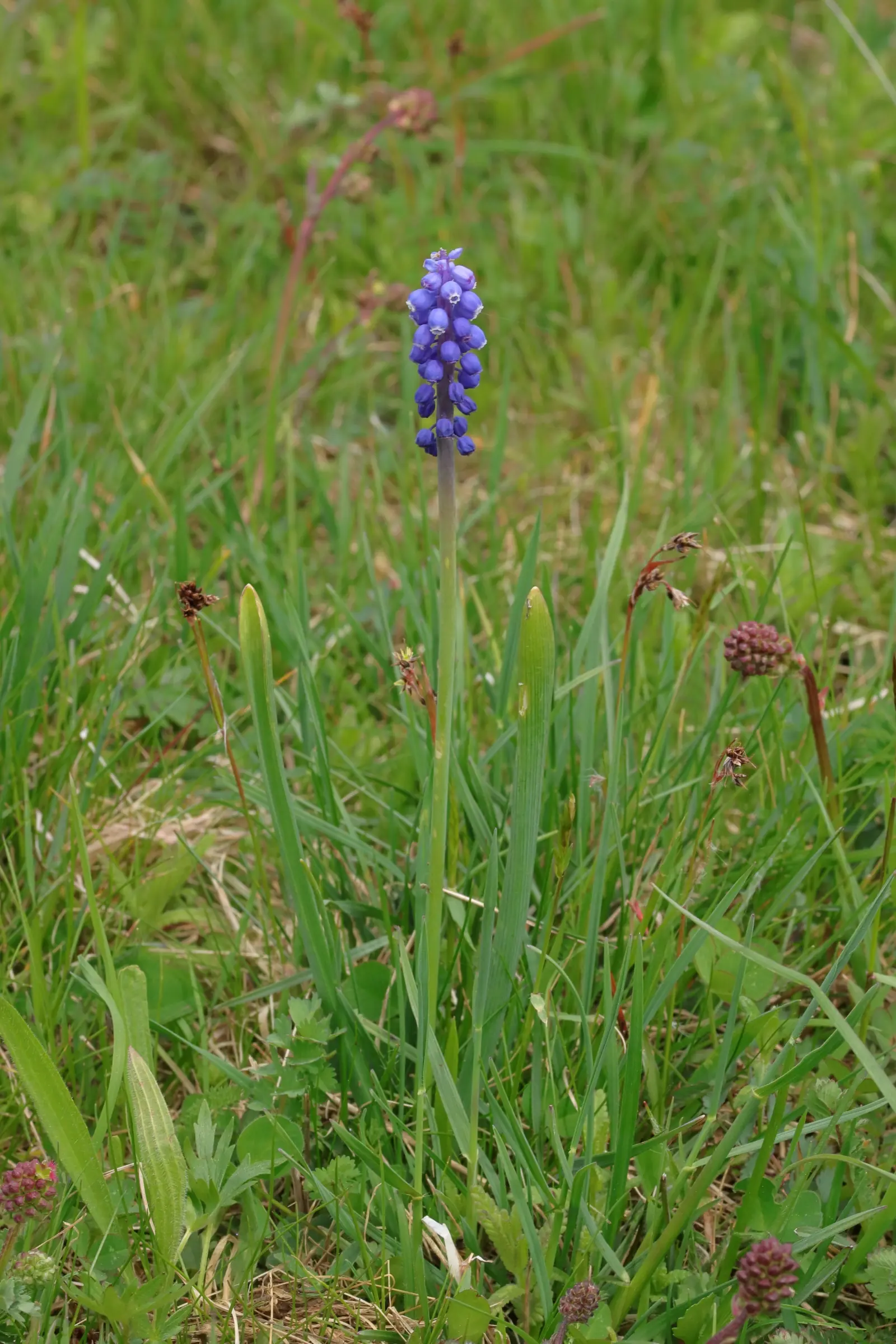
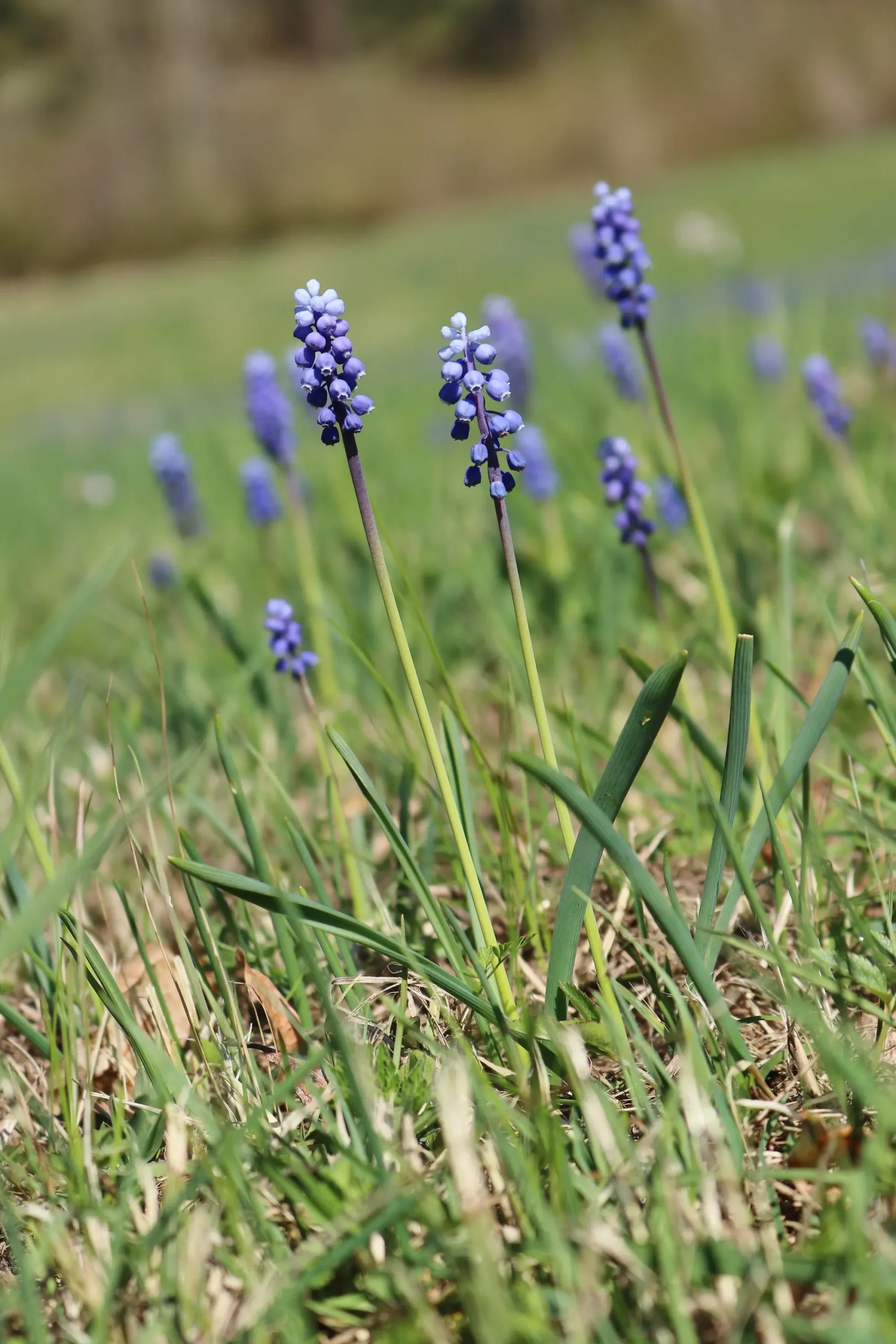
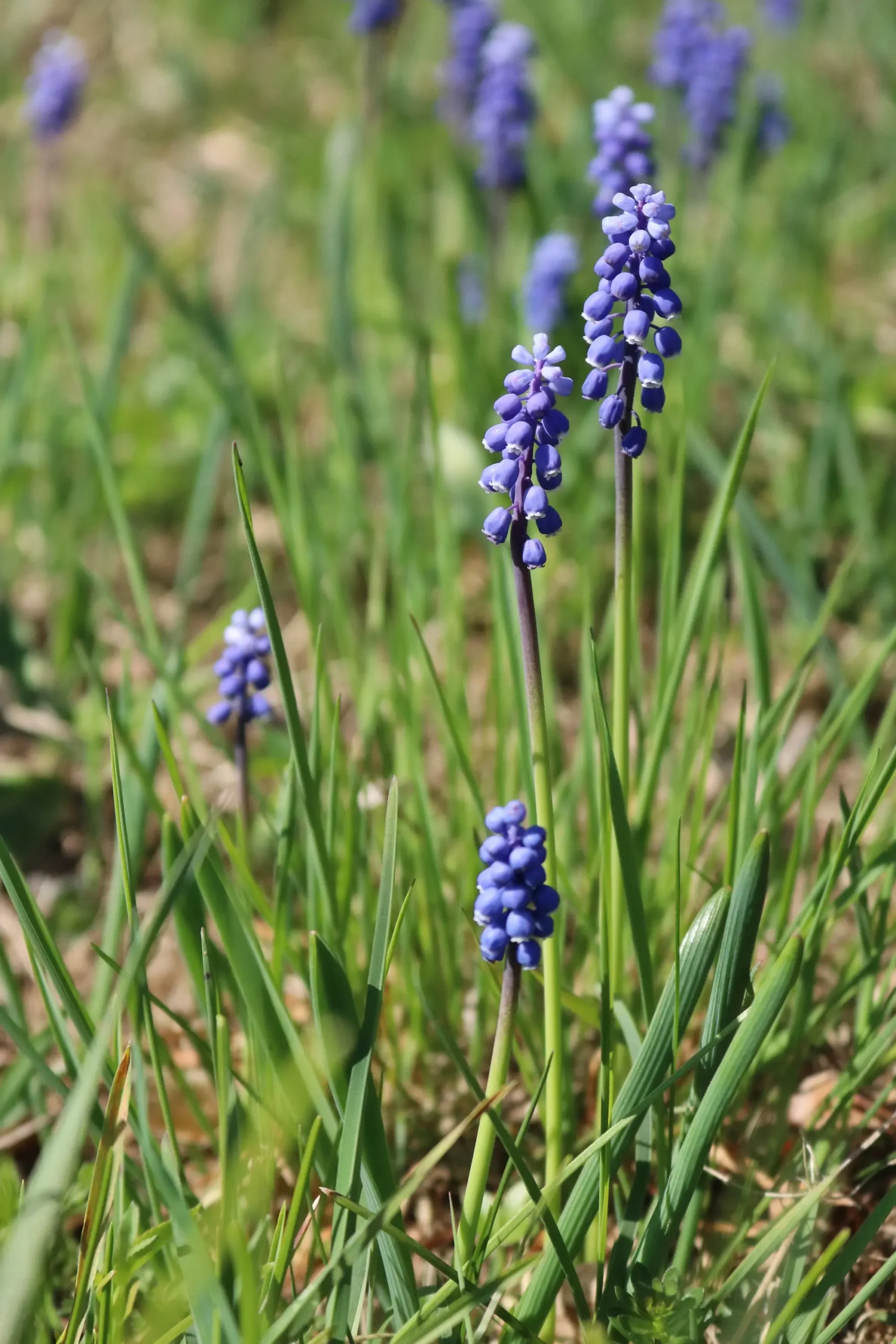
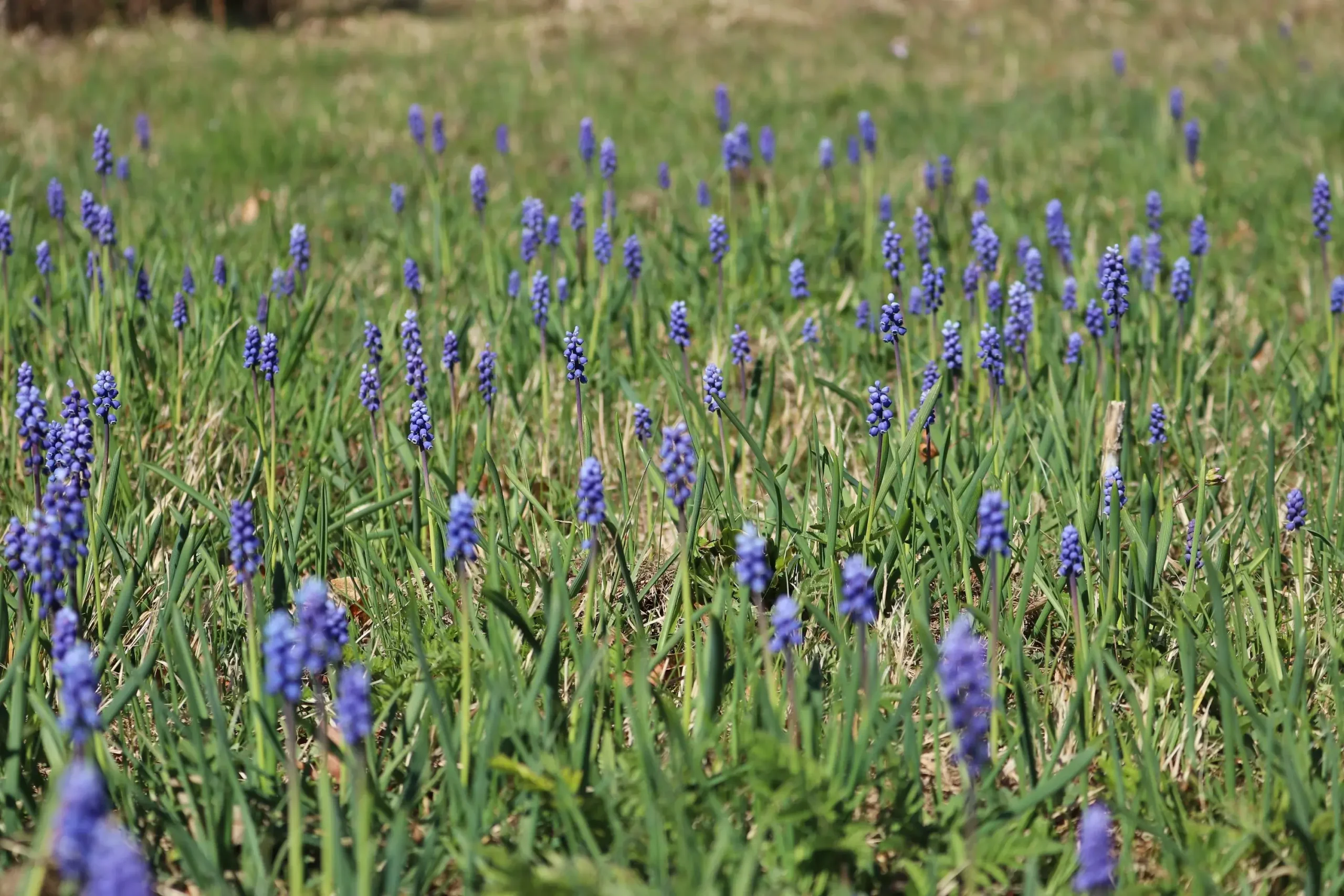
~ weak poisonous plant ~
Occurrence and distribution: The small grape hyacinth grows mainly on semi-arid grasslands, meagre grasslands, mountain meadows and in herb-rich oak forests (here mainly in special “bedstraw-oak-hornbeam forests (Galio-Carpinetum complex)”. In the Alps, the plant can be found at altitudes of up to 1,200 metres. It is scattered to rare in almost all of Central Europe. On the calcareous, partly very loamy soils of the Swabian Alb, the small grape hyacinth grows on the meagre grasslands and meadows. The plant genus originates from Asia Minor and the surrounding area. Before the 16th century, it was almost exclusively distributed between Egypt and the Caucasus. The oriental phase (between 1560 and 1620) introduced the plant to Europe.
Plant description
Growth habit: It is a perennial, herbaceous plant. The small grape hyacinth forms a roundish bulb underground. The thin outer covering is brownish in colour, while the inside of the bulb is white. Some of the leaves sprout from the bulb in winter or early spring. The onion also serves as a hibernation organ in which nutrients are stored. Smaller secondary bulbs are formed on the main bulb for propagation. The entire plant grows to a height of between 10 and 30 cm. The stem is rounded and bare. Racemose inflorescences form at the end of the upright stems.
Leaves: In most cases only two fleshy leaves are formed per bulb (rarely more!). They sit in a basal rosette. The individual leaves are linear and have a dark green colour. The end of the leaves converges in a blunt point. Single leaves are covered with parallel leaf veins.
Flowers: The inflorescence is loosely covered with dark blue flowers. The individual flowers are 3 to 4 mm long and have an ovoid structure. The flower head consists of six petals that are fused together. Inside, three stamens form in two rings around the central stigma. The flowers hang down on purple coloured stems. The upper flowers are lighter. They have no scent. The flowering period is from March to May. The flowers are pollinated by bees and bumblebees and, less frequently, by flies and other hymenoptera.
Fruits: Triangular / winged split capsules form from the pollinated ovaries. The ovaries are greenish at first and later turn brownish. When fully ripe, the involucre is slightly transparent. The capsule fruits open along the midrib. The seeds they contain are spread by the wind, among other things. They have a black colouring and are roundish.
Garden variety: the “Armenian grape hyacinth”
The „Armenian grape hyacinth“ (Muscari armeniacum) is a popular ornamental plant used in gardens. It is related to the other grape hyacinth species. It is considered a naturalised neophyte in Central Europe. Originally it comes from the Balkans, Greece and Turkey.
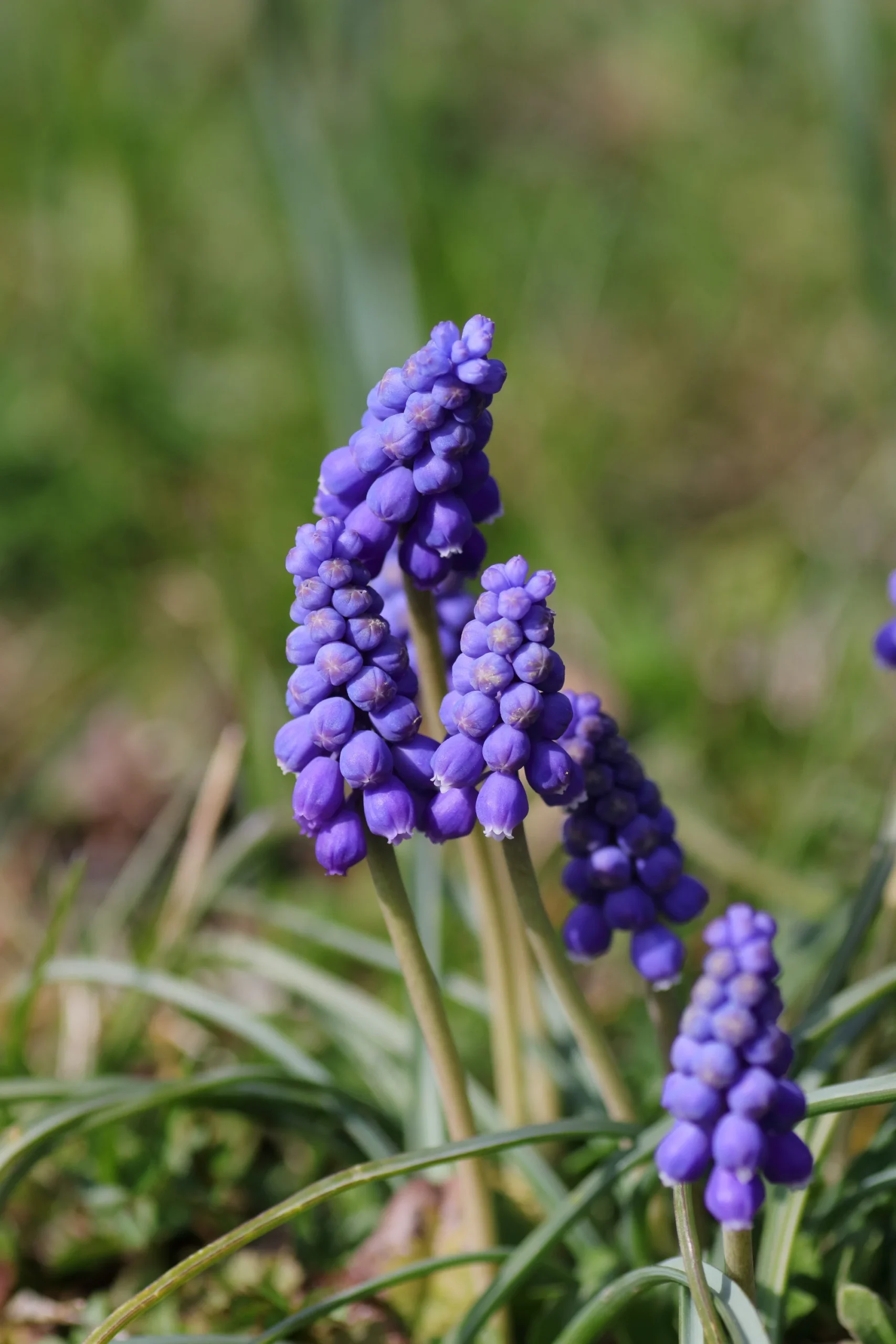
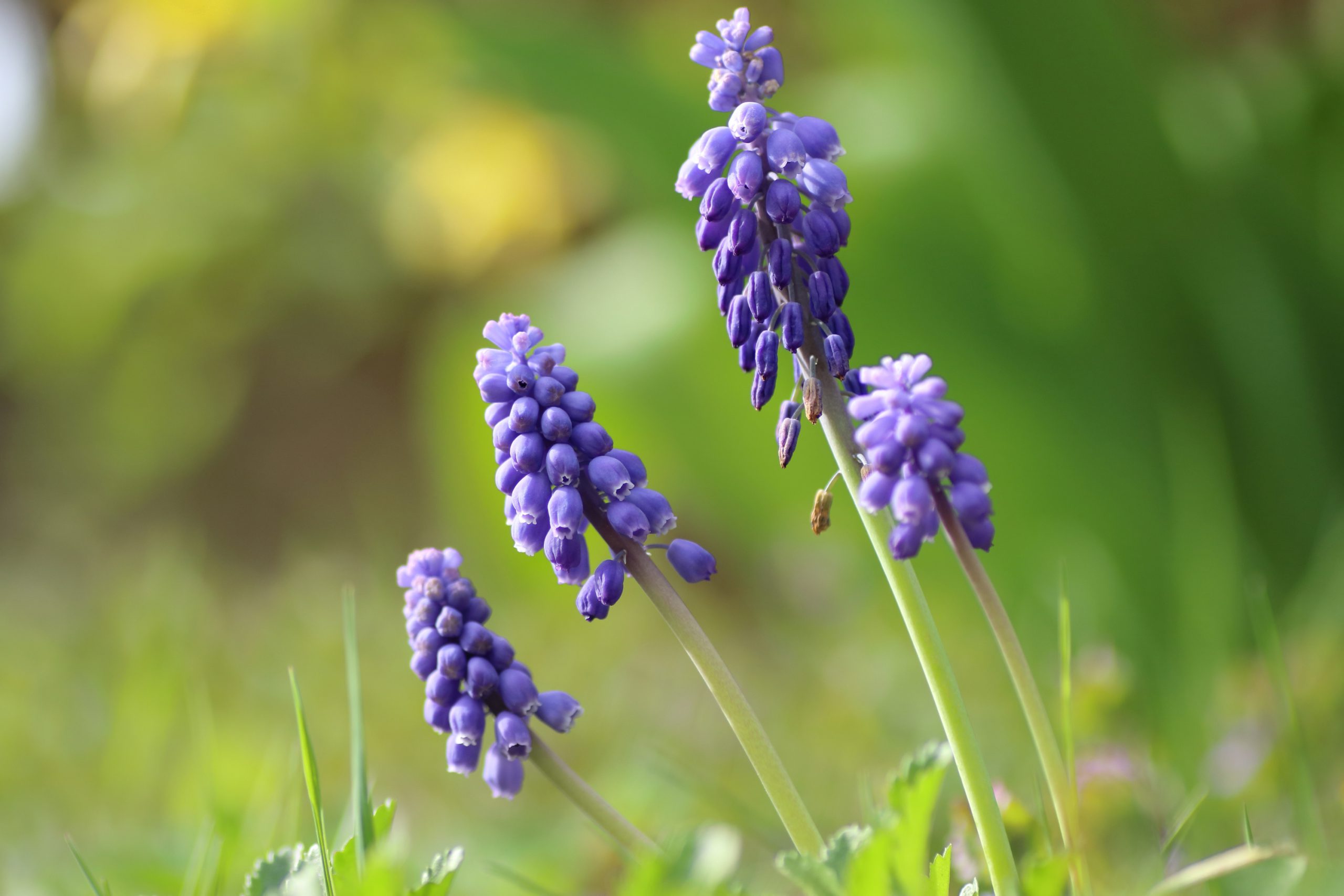
Folk names & name origin
Folk names: The small grape hyacinth has various folk names in some regions. These include “kleines Träubel” (little tear drop), “kleines Bauernbübchen” (little farmer’s boy) and “Hundszwiefel” (dog’s onion – in Burgenland, Austria). The name “Hundszwiefel” cannot be classified exactly. It is said to have been described by the botanist Schwaighofer (Samenpflanzen, p. 123/459). There is no confirmed source for this.
Origin of name: The botanical genus name Muscari goes back to the English botanist Philip Miller in 1754. An explanation of the name can be derived from the Greek word “muschos”. This refers to the partly musky smell of the plant genus. In his book „Die etymologie der phanerogamennomenclatur“ the botanist Friederich Kanngiesser puts forward the following theory: “The name is of oriental origin and refers to the musky smell of the plant; in Arabic, the plant is said to be muschirumi, related to Greek μόσχος, Latin muscus, english musk”. The German genus name “Traubenhyazinthe” (grape hyacinth) can be derived from the similarity of the inflorescence to the hyacinth. The botanical species name botryoides can be translated into english as “grape-shaped”.
Endangerment of the plant
Endangerment of the plant: The small grape hyacinth is already considered endangered. Like all grape hyacinths, this species is specially protected by the Federal Species Protection Ordinance (BArtSchV) and should not be picked under any circumstances. Moreover, it is something special to find such a large group.
Distribution codes: A, AV, M1, M2, F, K